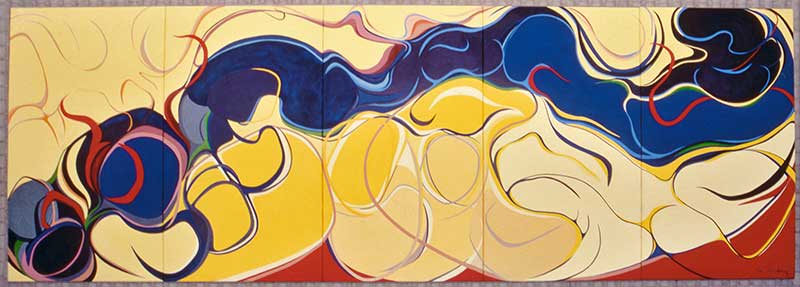
Bridge Mountain Mural (acrylic)
The Genius of Rita Deanin Abbey
BY KENDALL HARDIN
Photography courtesy of Robert Rock Belliveau and Rita Deanin Abbey Foundation
News flash for Las Vegas culture vultures! A stunning new museum formally opens its doors this fall to showcase the life work of a prolific, remarkable local artist extraordinaire. Can you name the artist? And the location of this treasure?
Although most locals would not recognize Rita Deanin Abbey as an artist, many would recognize several of her landmark pieces in the community. They include Spirit Tower, the 20ft. one-ton Corten steel sculpture greeting visitors to the Summerlin Library and Performing Arts Center, or the monumental Isaiah Stained-Glass Windows (16 windows 10’x 2’ each) at Temple Beth Shalom. Visitors to UNLV’s Judy Bayley Theatre before 2000 will recall Bridge Mountain (1974), the massive lobby mural welcoming audiences with a 30’ span of riotous color and undulating energy, now happily at home in Abbey’s museum.
Born to immigrant parents from Russia and Poland in 1930, Abbey was the youngest of four children reared in New Jersey. Like many gifted high-achievers, she knew at the early age of eight that she wanted to become an artist. By the time she was 14, she was taking the train to New York City to study at the Naum Michael Los School of Art. She continued her studies at the prestigious Art Students League, Goddard College, and the Hans Hoffman School of Art with the iconic master himself.
Abbey journeyed from the East to Albuquerque in 1950 to work on her MFA degree at the University of New Mexico, where her spiritual affinity with the natural world of the desert landscapes of the Southwest infused her soul and began to define her work. At the university, she met her husband, author and environmental activist Edward Paul Abbey, and the father of her two sons, Joshua and Aaron.

Spirit Tower at Summerlin Library (detail)
The couple divorced after 13 years, and Abbey moved to Las Vegas in 1964 to join the arts faculty in the early days of UNLV. In addition to teaching classes in drawing, painting, and color theory (wildly celebrated by her students), she reached out to develop interdisciplinary courses with the school’s science department, a radical and innovative move at the time.
Artist James Stanford was one of her early students. “After seeing my drawings, Rita organized a professional critique of my work, which ultimately led to my receiving a scholarship that spurred my career as an artist,” he recalled.
“The art world was a challenge for any woman in the 60s, but Rita stood her ground; she was no milk toast,” he continued. “She was focused, in charge, and a tough taskmaster, a perfectionist. She used words I had to look up after class and pushed me to work in broader mediums. I thought she was amazing.”
When Stanford returned to Las Vegas from graduate school in the Northwest, he joined the faculty at UNLV, where he and Abbey taught together for over a decade. After 22 years of teaching and being the lone tenured female professor in the department for many years, she achieved Emeritus of Art in 1987 – all the while producing series after series of artworks of her own in an astonishing array of mediums.
Another student, Vicki Richardson, founder of Left of Center Gallery, received the prestigious Governor’s Arts Award at the same time as Abbey in 1986. “I mentioned Rita in my acceptance speech out of respect and admiration for both her artwork and the impact she had on my art and career.”
“When Rita invited me to visit her studio and the early phase of the Museum build-out, I was awestruck – just blown away by the breadth of what she had already accomplished.”
As to what made Abbey so boundlessly creative and prolific, “She was always evolving,” Richardson mused.“ I think she explored each medium until she felt she had conquered it as far as she could, and then she seized a new challenge.”
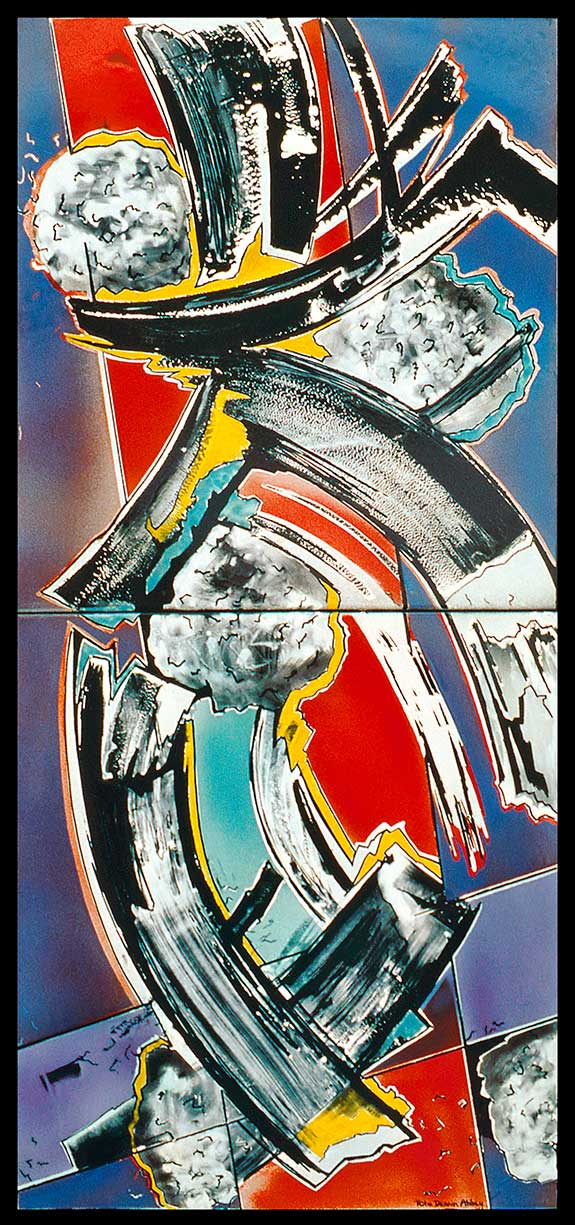
Nenana River, Denali (porcelain enamel fired on metal)
In Her Own Words:
“The infinite wonder of Nature has had the greatest influence on my work. I have explored desert landscapes and have been deeply affected by rock formations, vistas, sunsets, plants and wildlife, rivers, and the colors and textures of secret canyons. These places communicate and resonate with my own nature.
“My approach to making art is predominately intuitional rather than analytical. What feels “right” determines the direction. I am more interested in the search and discovery aspects of making art than in repeating what I have done and already seem to know.
“Even in large-scale works, I take risks and make changes. The realization that developing work with total freedom is an illusion forces me to grapple with my limitations and strive harder to reach my inner voice.”
– Rita Deanin Abbey
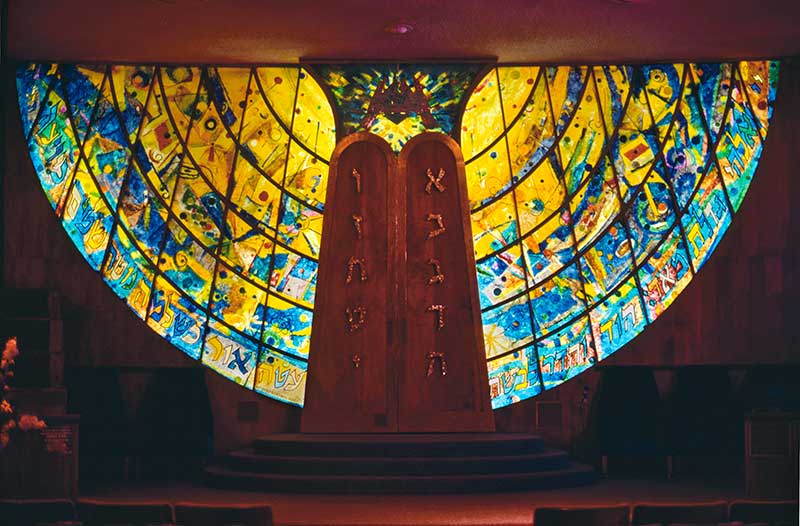
Wall of Creation (polyester resin and fiberglass)
In 1985 Abbey married Robert Rock Belliveau, co-founder of Associated Pathologists Laboratories, later acquired by Quest Diagnostics. As a couple, they were perfectly matched. Together, they created a home and studio in the Northwest city’s then wide-open spaces, with Dr. Belliveau backing his wife’s work and accompanying her to shows, workshops, and work sites.
“I always said Robert was Rita’s Medici and her biggest fan,” noted Bill Weaver, who first met the couple at the Shidoni Foundry in Santa Fe, where Abbey was fabricating her colossal Spirit Tower commission in 1995.
“Rita had a tireless work ethic. She was very exacting and critical about the quality of every detail, down to the perfect color tone of the patina, which drove us wild,” he recalled with a laugh. “But each piece was masterful. Art was everything to her.”
In 1988, the Palm Springs Art Museum exhibited a 35-year retrospective of Abbey’s work in partnership with the Las Vegas Natural History Museum and UNLV. This landmark exhibition was organized by Palm Springs chief curator Katherine Plake Hough. She brought together 20 series from Abbey’s work, regrouping them into twelve general categories defined by format and theme rather than chronological order. This ordering of Abbey’s work would provide a future blueprint for how works would be showcased in Abbey’s museum some 25 years later.
Hough and Abbey forged an enduring friendship together, with Hough serving today as curator of the Las Vegas Museum. Laura Sanders, Abbey’s long-time archivist (1990 – 2006), ably stepped into the director’s role.
After several bouts with architects, Abbey took on the museum’s design herself, partnering with general contractor Scott Blaser, a neighbor nearby. “Rita was definitely a hands-on artist,” he smiled. “She would change her mind from time to time. It was a long, very challenging, and sometimes tedious process, but the outcome was worth every moment we worked together.”
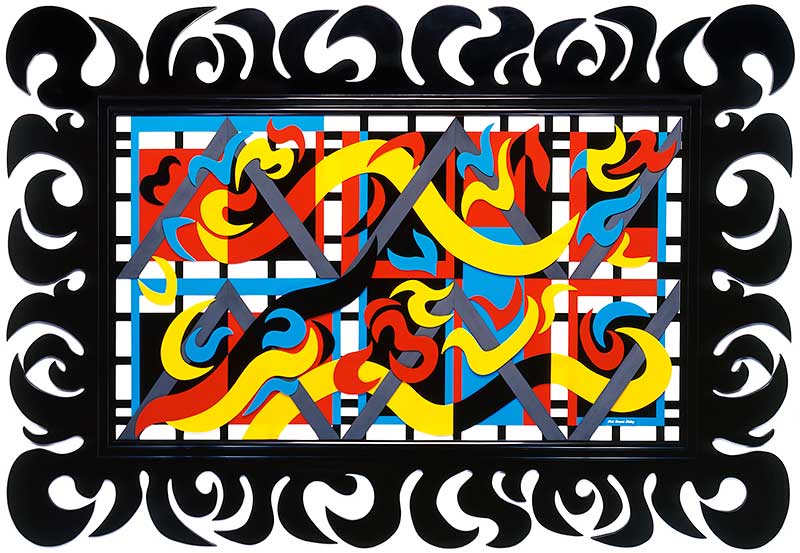
Celebration (plexiglass)
The facility build-out started in the spring of 2011 and finished a decade later in 2021. “Rita always insisted that a building is more than a structure,” Blaser added. “To her, every detail of the building is living art. ‘Architecture has a soul, a spiritual life of its own,’ she would continually remind me.”
The museum currently occupies 10,500 square feet of space on ten acres off Northwest Ann Road, now encircled by residential developments. The footprint also includes a courtyard, desert garden, outdoor sculpture park, and Abbey’s studio and home, which also bears her mark. One should note that the artist even designed all the doors and gateways to the museum, garden, and residence.
Inside the museum are twelve bays showcasing 175 pieces of her work, plus a small shop promoting some of Abbey’s books and prints. The museum, airily lit with skylights and glistening travertine floors, boasts soaring spaces for large-scale works and modulates into more intimate rooms for smaller pieces.
As one rounds each corner, new visual surprises wow and seduce the visitor. Her monumental works are certainly knock-outs, like the semi-circular 20’x40’ Wall of Creation (1970-71), commissioned by Temple Beth Shalom, the 6.6’x 9.6’ plexiglass relief Celebration (1996), and the Bridge Mountain mentioned before. But I’m equally drawn to her more diminutive Rivertrip Series (1971-77), providing a visual and literary diary of her experience on a six-day raft trip on the Colorado River through Cataract Canyon.
Were I an art thief, I’d abscond with all of her vibrant abstract expressionist paintings from the 50s that rival any icon of that era. While all her large-scale sculptures on the grounds are impressive, like the 22-ton Hidden Pass, I am drawn to the elegant Holocaust (2000), her redemptive symbolic devolution of the Star of David. And, of course, to Snakewash (2004), the clever 62-foot Corten steel ground sculpture slithering through her Gan-Or garden.
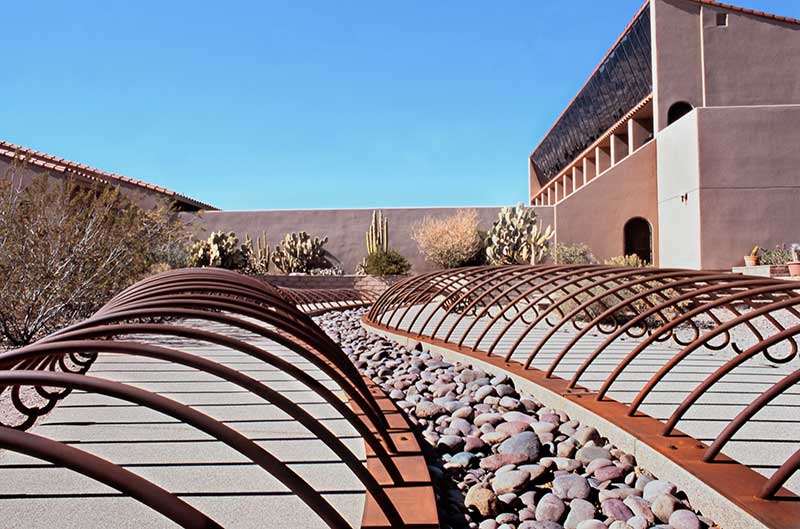
Snakewash
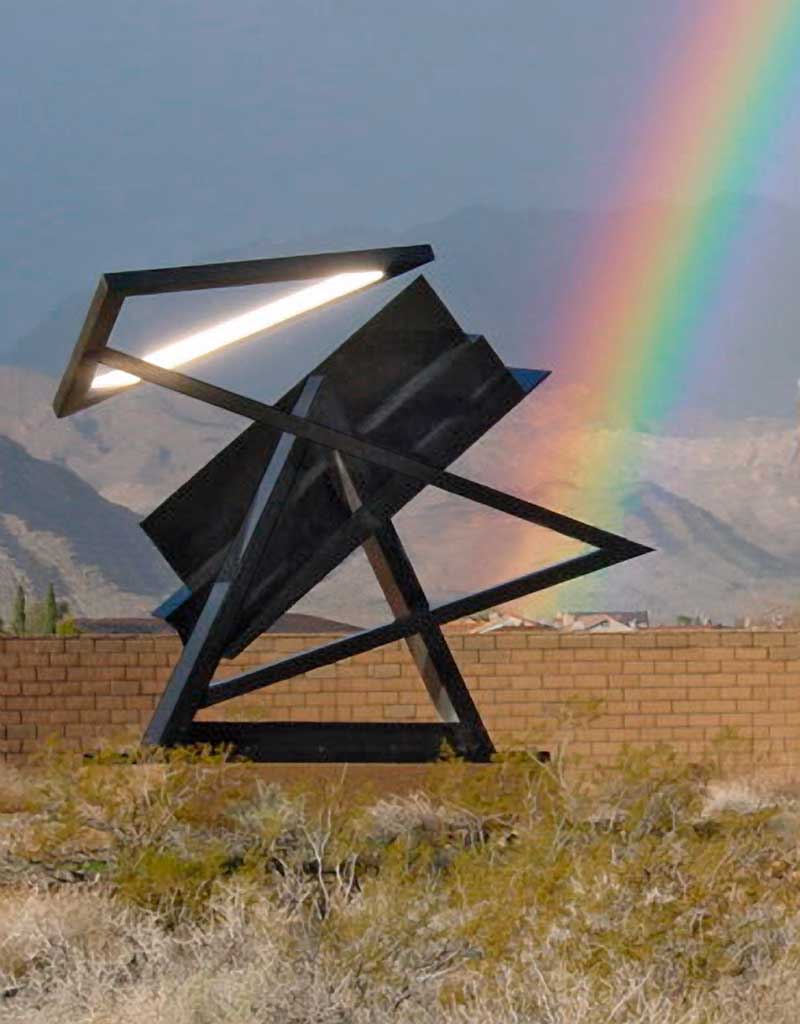
Holocaust (stainless steel)
I can’t think of another contemporary artist who has worked in so many different mediums (including Picasso!): painting, drawing, printmaking, sculpture, porcelain enamel fired on steel, computer art, stained glass, epoxy-resin, torn paper collage, figurative and landscape works, calligraphy, plastics, encaustic, watercolor, wood and mixed media of all kinds! A keen intellect, Abbey also penned poetry and published numerous books. Unlike many visual artists, she could verbalize her creative process with laser-sharp insight.
To witness firsthand sixty-odd years of a brilliant artist’s life work in one exquisite space designed by that artist is an extraordinary, one-of-a-kind experience. The Rita Deanin Abbey Museum campus will soon open its doors as a unique, unparalleled cultural amenity for the Southern Nevada community. How it will be marketed, programmed, and sustained is now in the hands of the museum’s founding foundation board and staff.
Admittedly, few artists enjoy the financial and professional support Abbey had to advance her work. Still, the sheer breadth and caliber of her work elevate this museum far above that of a vanity showcase. Like the desert, her creation shines like a rare unfolding jewel, exploding into bloom after a fierce downpour.
Abbey died on the first day of spring last year at the age of 90. Arts leader Patrick Gaffey described her as “the most important unknown artist in Southern Nevada.” A Zen master might have whispered, “Inspired by the forces of nature, she morphed into a mega creative force herself.”
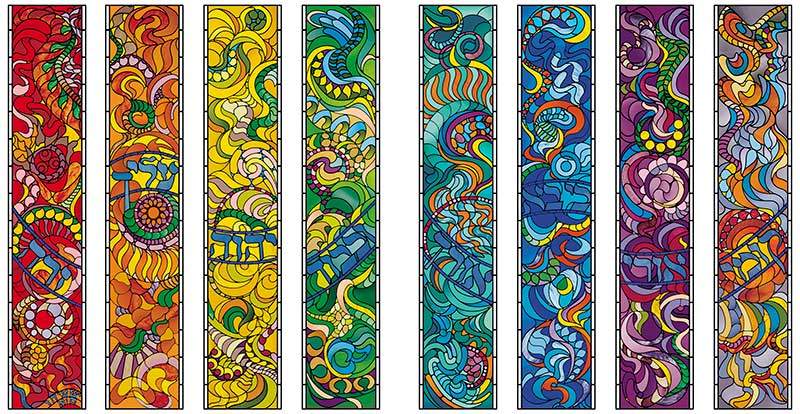
Isaiah Stained-Glass Windows (8 of 16)
Looking back, Abbey participated in 50-some individual exhibitions and more than 100 national and international group shows. She was still mounting installations well into her 80s. Among her many accolades and awards, she received the Las Vegas Arts Commission’s Lifetime Achievement Award for Excellence in the Arts in 2012.
Rita Deanin Abbey has left behind a priceless legacy to inspire future generations of artists, art historians, and art lovers of all ages. Perhaps Vicki Richardson summed it up best as she reminisced about her first visit.
“I drove over the hill onto the grounds and wandered through this amazing treasure jam-packed with incredible work. I was overwhelmed and thrilled at the same time, but I left transformed by Rita’s spirit and art. It was pure creative magic!”
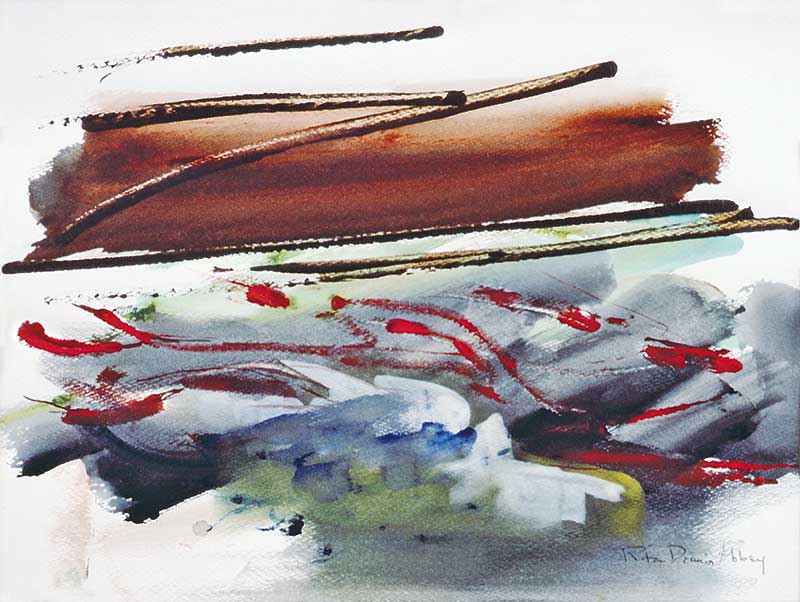
Rivertrip Series: “Anonymity”
Rita Deanin Abbey Museum
5850 N. Park Street
Las Vegas, NV 89149
To arrange a visit call
(702) 658-5097 or
(702) 600-0838
info@rdamuseum.org
ritadeaninabbeymuseum.org
Laura Sanders, Director
Katherine Plake Hough, Curator
Blaser Construction, Builder
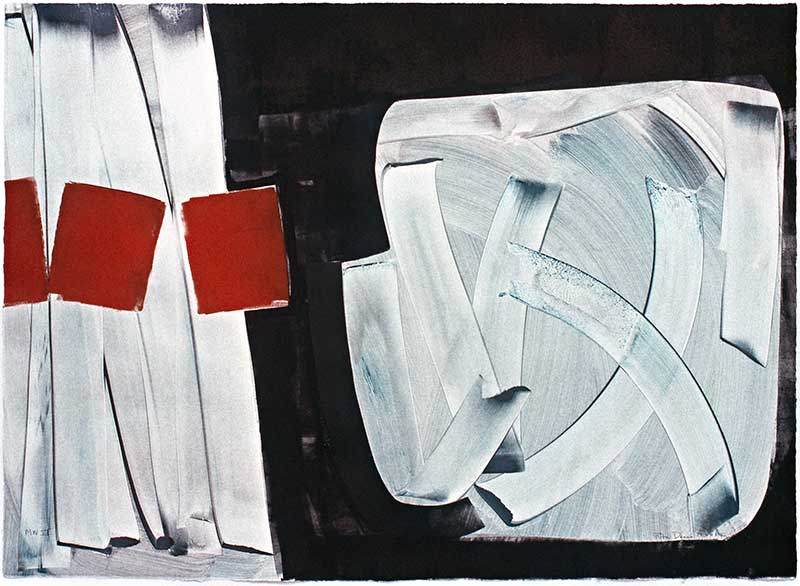
Montenegro Series: Monoprint VI

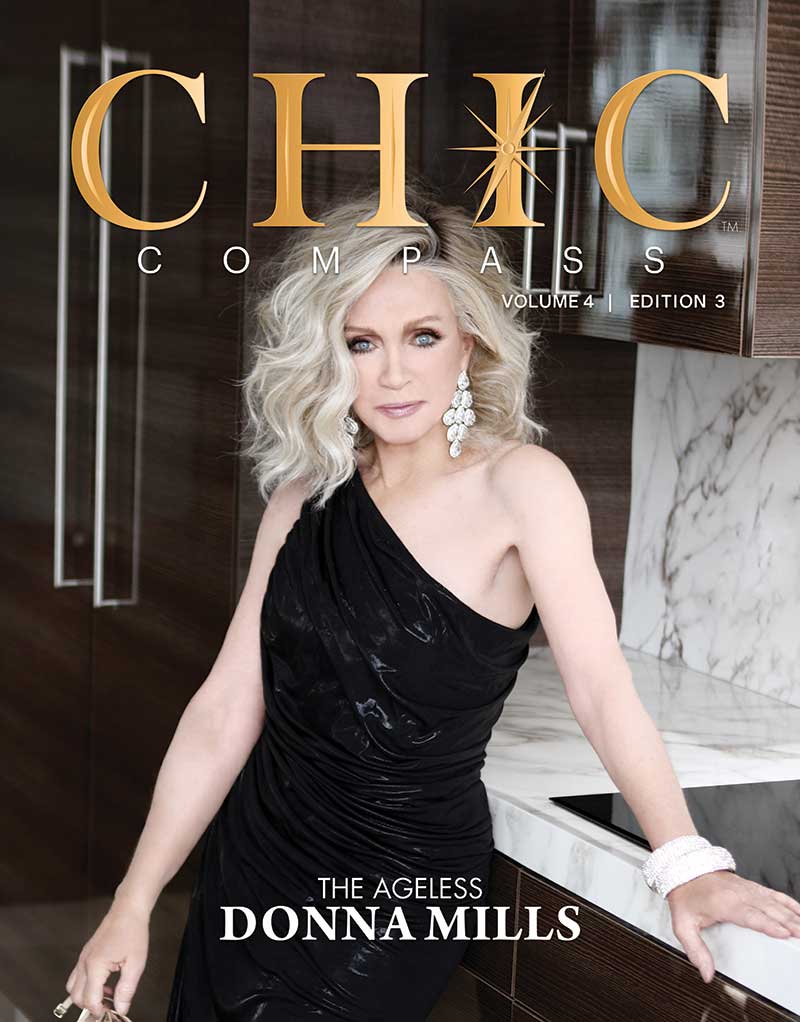

I was privileged to meet Rita and tour her atelier, courtesy of my good friend Robert Belliveau. The breadth of her art and joie de vivre was impressive. I am sure the museum will attract many new admirers. I wish the curators and sponsors all the best and I congratulate them for their admirable effort .
Wow. A wonderful tribute to a wonderful Aunt and Artist! She’d be pleased.
Inspiring!